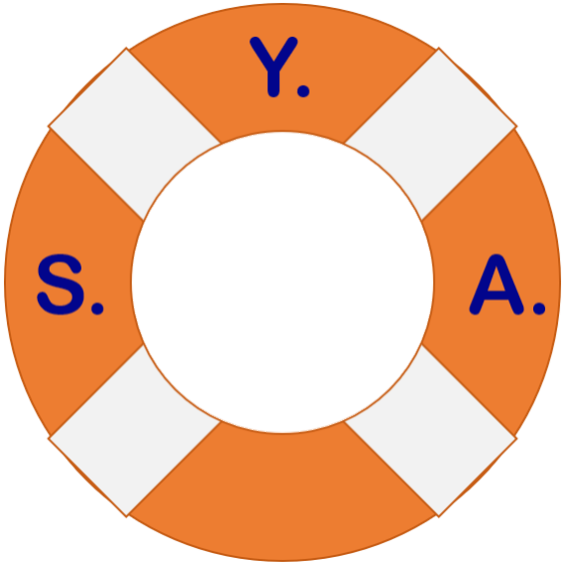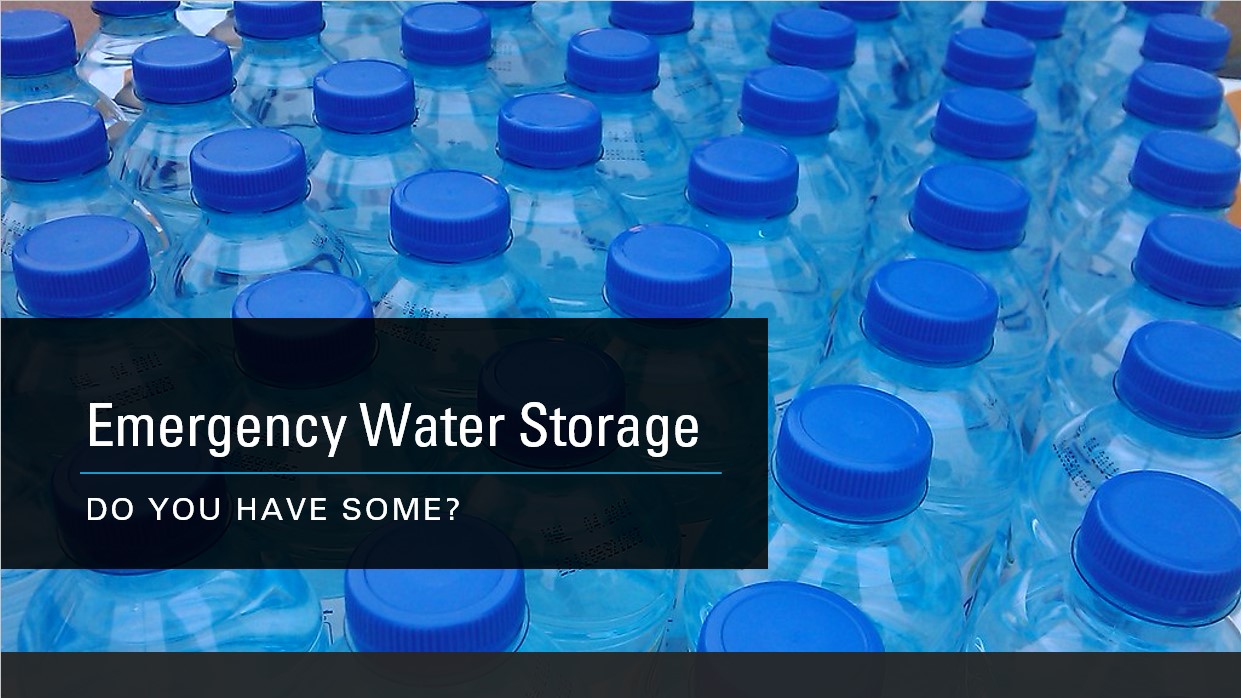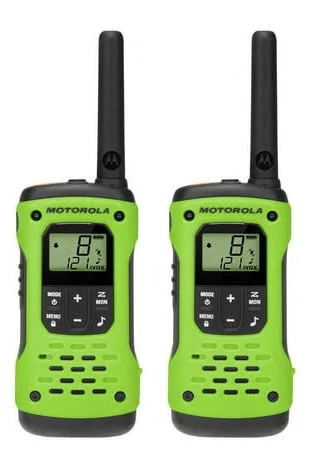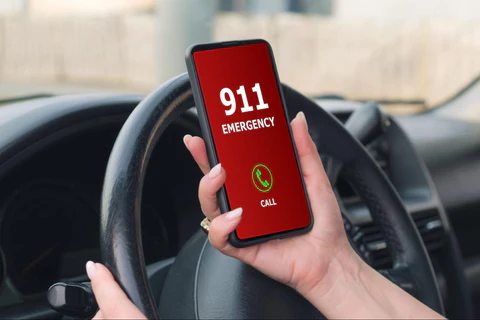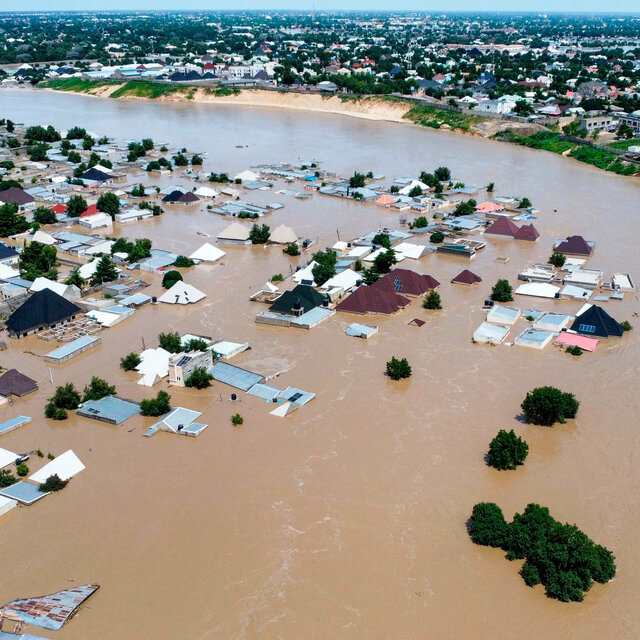Having emergency water storage is important. Water is the most important resource to the human body. Yet, when I ask people if they have water stored for an emergency, I get some of the most interesting looks. These vary from a look of guilt or panic as they acknowledge they don’t to a look of confusion as they wonder why they would need to have water stored. Most people assume the tap will always be flowing so why should they store water?
What brought this up?
Surprisingly, I came up with this article while browsing homes on Zillow. A house for sale listed a feature of the property as 60,000 gallons of water for fighting wildfires (it was on 120 acres). My last article just talked about wildfires and the danger they pose. I am also working on an article about the on-going mega-drought in the western US that is contributing to the increasing number and size of wildfires.
With water restrictions in place across numerous states, counties and small towns, having a reserve of water is something more people need to take seriously. Now most people will not need 60,000 gallons to fight wildfires. You should, however, store enough to provide for the needs of you and your family for at least 3 days but preferably 14 days at a minimum.
It won’t happen to me
Despite the constant news coverage of ever-increasing severe weather and disasters due to climate change, most people don’t think they will ever be impacted or affected by a disaster…until they are.
Then they fixate on how it could have happened, maybe beat themselves up for not preparing, lash out and blame others for their situation and generally complain about the things that are now completely out of their control.
Climate Change Reality
The US western and southern states are in the midst of a mega-drought. Several towns through-out California, Nevada, Arizona and New Mexico have been living with the reality of no water coming out of their taps for months or even years now.
They rely on regular water deliveries to fill a large cistern in the backyard to provide drinking water, take showers and flush their toilets buy dumping a bucket of water into the bowl. That is if they can afford it.
It has only been 100-120 years since indoor plumbing became widely available to Americans and already some have lost the luxury that should be a fundamental right. Climate change-fueled weather events and disasters are only going to make this a worse and more common occurrence.
If you are not up to speed, check out my 2021 and 2022 Events & Disasters posts under the Drought / Mega-Drought / Water Insecurity section and just scan the headlines.
Are you ready?
If you prepare, the impact of going through the effects of a disaster or lingering effect of climate change can be minimized or eliminated all-together. It doesn’t take a lot of work or money to have the bare minimum of 3 days (72 hours) worth of supplies. For longer terms it does require some planning, but it is not insurmountable.
Common Excuses
So why don’t people prepare? Some of the most common excuses I’ve heard are:
- I don’t have the time.
- I don’t have the money.
- I don’t have the space.
- I never thought it could happen here.
- I never thought it could happen to me.
- I thought the government would help me.
There are more, but it boggles my mind the number of people that think like this. Somehow, they justify it in their heads and to others why they are not prepared when disaster strikes. When it comes right down to it, I think most people just want to bury their heads in the sand because it is the only way they can cope with the frightening reality of our world. They only confront the unthinkable when they are forced to, although some, not even then.
What can you do?
I use a variety of methods for my prep and suggest a mixed approach as best for most people. I’ll go into the details of mine shortly, but here are the different options to consider:
- Bottled water
- Water Storage Containers
- Water Filtration
- Water Purification
Bottled Water
The is the easiest way to get started and just requires the space to store a few cases. If you are concerned about PFAS leaching into the water from the plastic, make sure to keep your bottles stored in a cool space protected from sunlight. The sun can heat the cheap plastic allowing chemicals to be transferred into the water. Also be sure to use the water before the best buy date to minimize the chance of PFAS contamination.
Water Storage Containers
This is the next step. If you know of an impending disaster or threat to your water supply, before it strikes, take the time to fill water safe storage containers. This requires space and depending on the size may not be movable once filled. Water is heavy and bulky so you need to plan accordingly.
Safe storage containers for water come in all shapes and sizes:
- Portable bottles: 8oz, 10oz, 16oz, 20oz, 24oz, 32oz, 40oz, 48oz and 1-gallon.
- Camping Jugs: 5-gallon, 6-gallon and 7-gallon
- Water Barrels: 25-50 gallons
- Water Cubes: 275 gallons each
- Cisterns: 35 gallons – 5000 gallons
- Catchment Systems: custom sized and built.
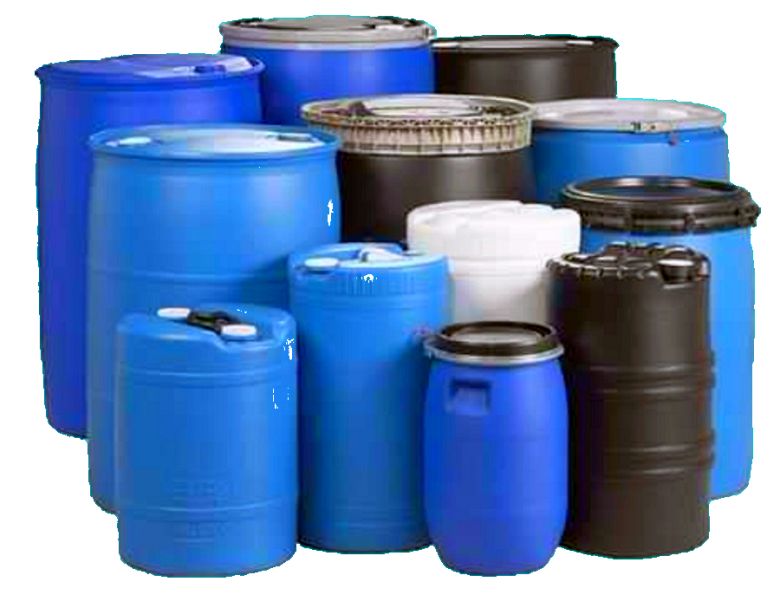
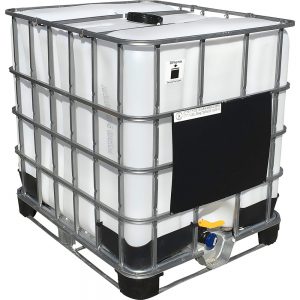
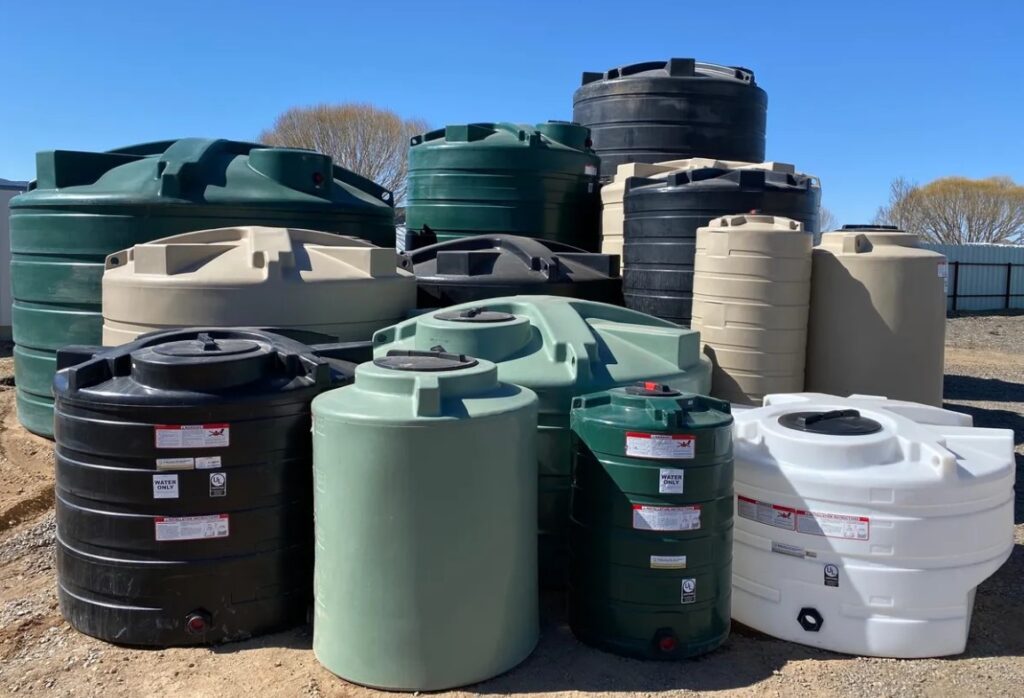
There really are so many options to choose from in every shape, size and price point to fit any budget.
Water Filtration Options
There are number of filtration devices on the market for outdoor enthusiasts that could be used to filter water that is safe to consume.
You can also construct your own water filter if you have the materials and knowledge.
Water Purification
These methods are more advanced skills that I teach in my online course: Emergency Prep Essentials. There is simply too much information to cover in this article.
- By boiling your water
- Using Purification Tablets
- Using a UV Water Purifier
- Using Tincture of Iodine
- Using Chlorine Bleach
Click the link above if you want to learn more. You can also read this article from the US EPA for more details: Emergency Disinfection of Drinking Water
How am I prepared?
I’m a recent transplant from Illinois to Utah and am currently renting so I don’t have a ton of space for anything elaborate. That doesn’t mean I can’t meet my water needs for at least a month if necessary. In fact, I could probably meet them much longer. Let’s take a look.
Bottled Water
For starters, I have 4 cases of bottled water. Each case has 40 x 16.9-ounce bottles. That works out to 160 bottles of water. At 4 bottles per person a day for drinking and 4 per person for cooking/cleaning, this amount can last 1 person 20 days or 2 people 10 days. If you don’t use or need the 4 bottles per day for cooking/cleaning, that just further extends the number of days your supply can last.
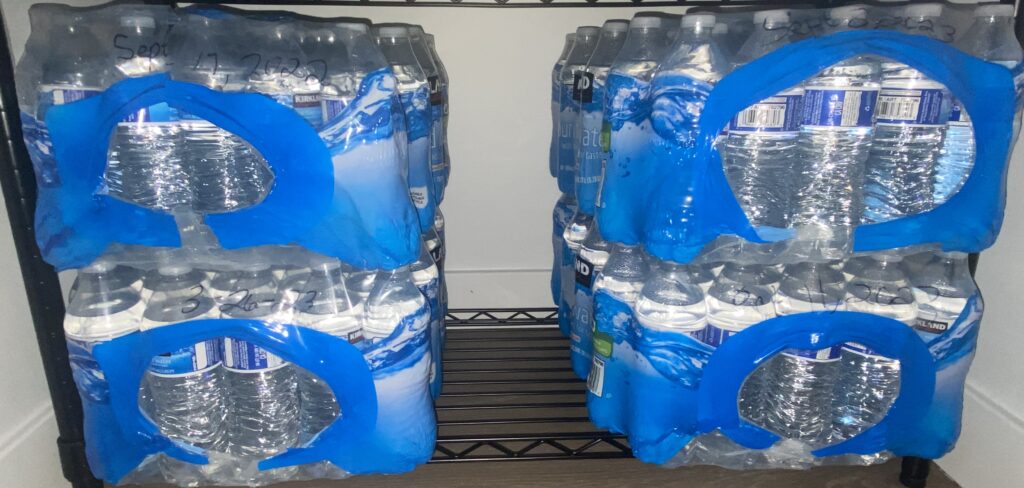
Water Storage Containers
Next, I have numerous water storage containers I can fill with water if I have advanced notice that I need to store water. My water storage options included:
| How many | Storage Container | Description | Current Cost | Total gallons |
| 2 | 7 gallon water jug | Cube shaped containers with a tap for dispensing water. | $17 each at Walmart | 14 |
| 2 | 6 gallon water can | Rectangular shaped containers with a pour spout. | $17 each at Walmart | 12 |
| 2 | WaterBOB | Large plastic storage bags for your bathtub. They can hold up to 100 gallons of water each depending the size of the tub. | $35 each on Amazon | Up to 200 |
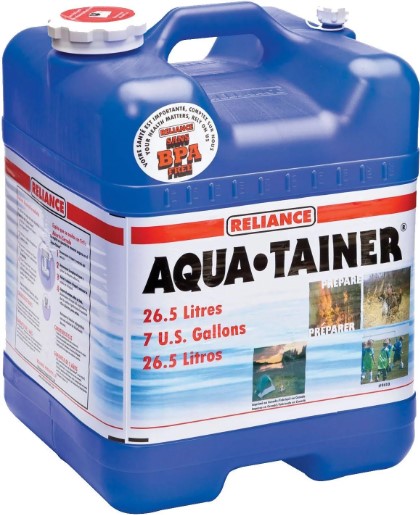

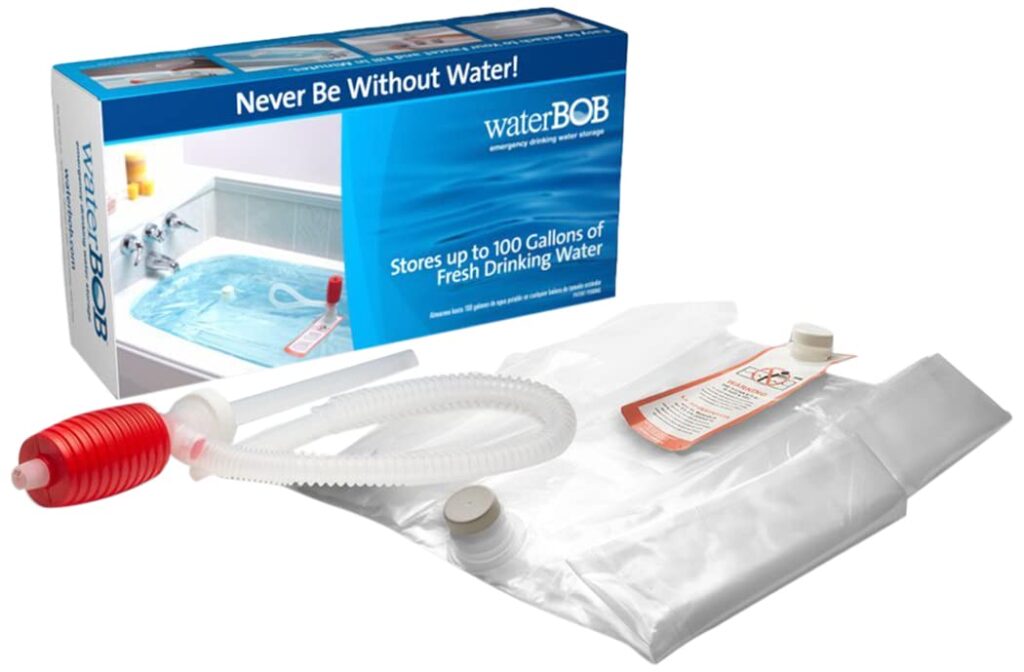
Water Filtration
Third, I have several filtration devices I can use to purify water if I run out of stored water.
| How Many | Filter Option | Current Cost | Filter Capacity |
| 2 | Sawyer MINI water filtration system. | $25 each on Amazon | 1000 gallons |
| 2 | LifeStraw Personal water filter straw. | $16 each on Amazon | 1000 gallons |


And if that isn’t enough, I have the materials & knowledge to construct a water filter using 2-liter bottles or 5-gallon buckets.
Water Purification
These are emergency / last resort methods in my kit. I have a bottle of water purification tablets and a gallon of regular chlorine bleach if they become necessary and of course I can boil water as well.
| How Many | Purification Option | Current Cost | Filter Capacity |
| 1 | Portable Aqua | $8.25 on Amazon | 50 quarts |
| 1 gallon | Regular Chlorine Bleach* | $7.24 at Walmart | Approximately 800 gallons |
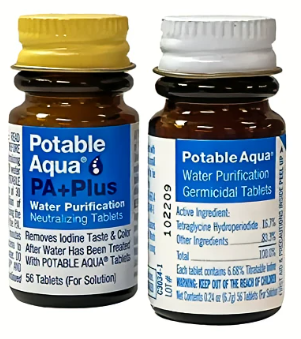
*IMPORTANT! ONLY REGULAR UNSCENTED BLEACH can be used to purify water for drinking and cooking.
Using any other variety (Scented, Color Safe, High Efficiency-HE, Splashless, etc.) will make you very sick at the minimum and CAN KILL YOU.
DO NOT USE bleach unless you know the proper measurements and method for disinfecting.
Make sure to rotate/refresh your stock
Bottled Water
One important thing to do if you buy cases of bottled water is to make sure you rotate the stock using the case that is set to expire first.
After buying a new case, using a sharpie, I write the expiration date in big bold numbers on the wrapping so I can see the date with a quick glance. Most cases expire 12-18 months after I have purchased them. I rotate my supply by using the case that will expire first. I usually start using it 1-2 months before the expiration date. Once it is gone, I replace it with a new case.
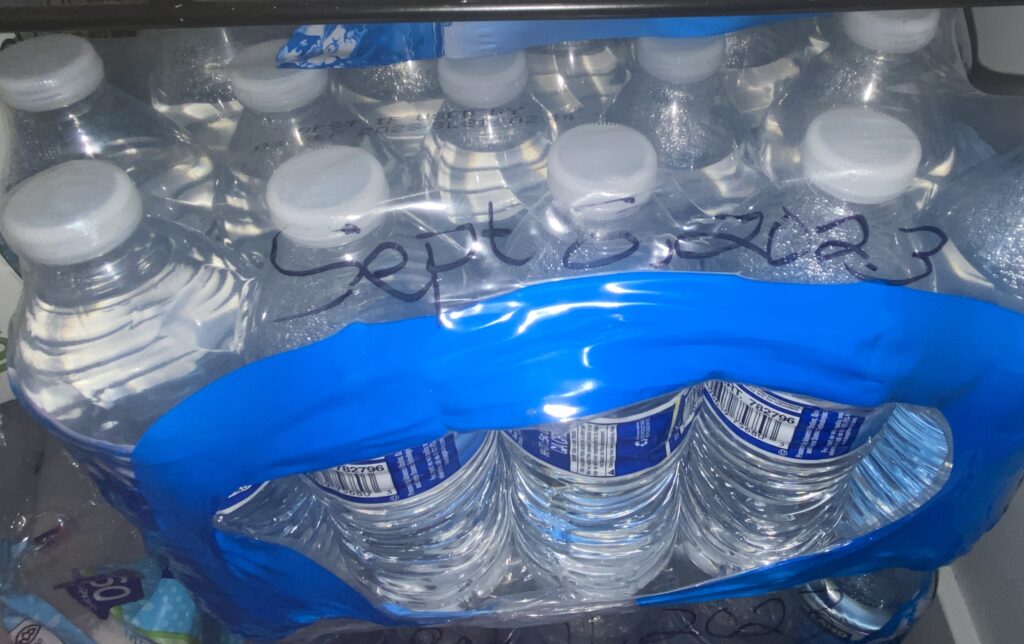
Water Storage Containers
If you have water stored in containers it is important to make sure that you check it periodically to make sure no bacteria has found its way into your water. If it has, don’t panic, you just need to filter and/or purify the water before drinking or cooking with it.
Water Filtration
If you use a filtration device, make sure to follow the instructions for cleaning it (if any) to ensure it can last for the full number of gallons it says it can filter.
Water Purification
Check the expiration dates on the tablets, bleach or iodine in your kit regularly. Make sure to replace any that are expired.
Where to store your supply
Wherever you have space. Preferably not in direct sunlight. I have mine in various places around the house.
| Bottled water | Kitchen pantry |
| Water storage containers | Garage until I need to fill them |
| WaterBOB | Under the sink in each bathroom with a tub |
| Sawyer filter straw | In my bug-out bag |
| Lifestraw | In my car emergency kit |
| Purification Tablets | Also in my bug-out bag |
| Bleach | In my laundry room |
Wrap-up
And there you have it. A quick guide to helping you see how easy it is to have an emergency water supply available if you should need it.
Last Updated on November 29, 2022
